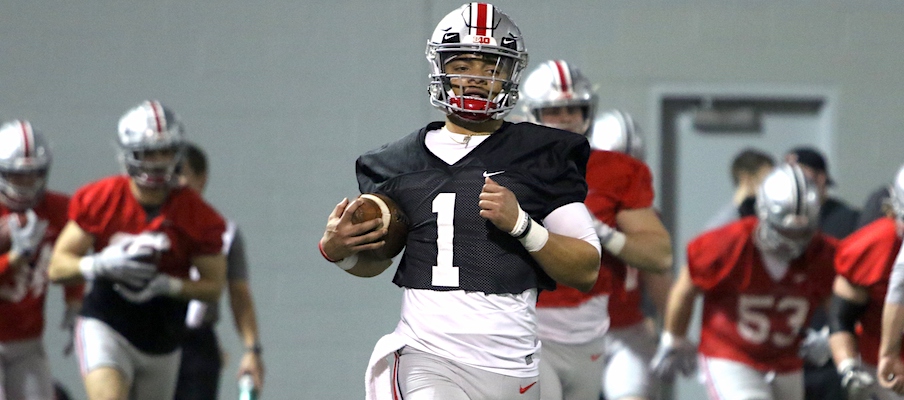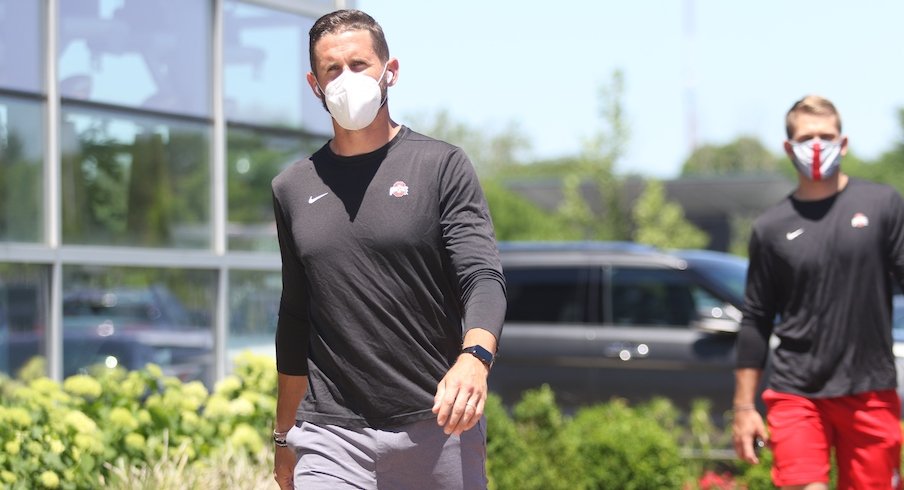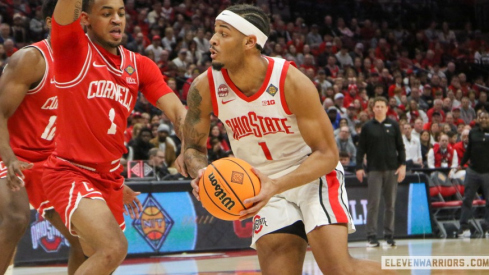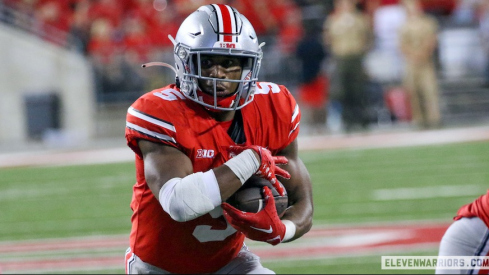Much like last week’s decision by the Big Ten to cancel non-conference games for the upcoming fall sports season, the recommendations for the return of sports released by the NCAA on Thursday can be viewed as both a step in the right direction and a stark dose of reality.
On one hand, it’s a positive that the NCAA has finally put together guidelines for how often athletes need to be tested for COVID-19, and what needs to happen when athletes test positive, whenever sports resume. If football and other college sports are going to be played this fall, there needs to be a plan to keep athletes (and others they might come in contact with) as safe as possible that also provides uniform expectations for how teams should deal with the pandemic.
That said, the guidelines recommended by the NCAA on Thursday – many elements of which are expected to be adopted into universal policies by the Power 5 conferences, according to Sports Illustrated’s Ross Dellenger – also make it clear just how much of a high-wire act the 2020 college football season could be, presuming it happens before a vaccine becomes widely available.
Perhaps most strikingly among the NCAA’s recommendations, which the Power 5 are reportedly expected to mandate: Those who test positive for COVID-19 will be asked to quarantine for 10 days while those who were found to have been in close contact with positive cases will be asked to quarantine for 14 days (due to the lag that can occur between exposure to COVID-19 and actually testing positive for the disease).
The CDC’s definition of close contacts includes those who had direct physical contact with someone who tested positive for COVID-19 or were within six feet of someone who tested positive for COVID-19 for 15 minutes or more. Per Dellenger’s report, the Power 5 policies will include “anyone participating in face-to-face or contact drills against each other” in its definition of close contacts.
In a sport where close contact is integral to the game, that makes it likely that even one football player testing positive could also sideline many of his teammates – and players from recent opponents – for two weeks.
Considering that there have been an average of more than 60,000 new confirmed cases of COVID-19 per day in the United States over the past week, it’s unrealistic to expect that college football teams won’t be hit with positive cases over the course of a season, especially considering that college athletes won’t be confined to a bubble like athletes in many professional leagues.
That could be reason enough to delay the start of the season, postpone it to spring or even cancel it altogether if case numbers don’t start trending downward. Brian Hainline, the NCAA’s chief medical officer, said Thursday that “the idea of sport resocialization is predicated on a scenario of reduced or flattened infection rates.”
For the most part, what happens with the 2020 college football season is out of the control of the players and coaches who actually take the field, as those decisions will be made by conference commissioners, athletic directors and university presidents, among others, in accordance with public health officials. Schools will have to have the resources to test their athletes on a weekly basis as required, and how feasible that will be is also uncertain.
Yet the NCAA's guidelines have been developed for a reason – to enable football and other fall sports to be played if at all possible – and if we assume that a football season will be played under those guidelines, coaches and players are going to have to be prepared to adapt in significant ways.
Teams are going to have to be prepared for the possibility of losing any player at any time for two weeks. While depth is always important in football due to injuries, it’s going to be even more important as long as the coronavirus threat persists. And teams will have to develop that depth and prepare their backups to be ready to play while also potentially practicing in different ways than ever before.
The NCAA’s report Thursday suggested that football teams should consider practicing in separate units – which could limit opportunities for backups to practice with the starters and for first-team offenses and defenses to practice against each other – in order to mitigate the spread of COVID-19 throughout their rosters.
“Schools should consider the establishment of “functional units” as a strategy to minimize the potential spread of COVID-19,” the report states. “For example, the first unit of the football team always training against the third unit of the football team, and the second and fourth units always training together. This means that if an individual from one of those units does become infected, the entire team may not be impacted, and contact tracing may be more manageable than it would be otherwise in the event of an infection.”

Whether teams will actually follow that guideline is uncertain – and it’s probably unlikely that a team that loses its entire starting offense or defense to quarantines will proceed forward with actually playing a game – but it’s surely something they’ll have to consider if they want to improve their chances of getting through a season without major disruptions.
Coaches and staff also shouldn’t be forgotten in this equation. They, too, will have to abide by COVID-19 testing and quarantine requirements, which means coaches will have to be prepared to potentially take on additional duties or for quality control coaches and graduate assistants to fill in if any members of the coaching staff are forced to spend time away from the team.
In order to decrease the likelihood of outbreaks that could derail or interrupt seasons, players and coaches will be expected to make some additional adjustments in the interest of their safety that might not necessarily be optimal to their performance.
While players aren’t expected to be required to wear masks while practicing or playing in games – Ohio State athletic director Gene Smith said that was “unrealistic” when asked about it in May – the NCAA is recommending that they, along with all coaches and staff, wear masks when they are on the sidelines. The NCAA also says “schools may want to consider the effectiveness of face shields,” including those that can be affixed to the face masks of football helmets for use in games and practices, as a “potential alternative to the use of masks/cloth face coverings,” though Thursday’s report noted that schools should seek confirmation from helmet manufacturers that adding those face shields will not compromise the performance of the helmet.
Traveling to play road games will also likely be different than usual for the 2020 season. The NCAA has recommended that “aim to travel and play the same day to avoid overnight stays,” though acknowledges that might not always be feasible. Either way, it’s likely that teams’ routines leading up to games – even before home games, as Ohio State typically stays together in a hotel on campus on Friday nights before playing on Saturdays – will be altered as a result of the pandemic.
All of this will create new challenges for college football players and coaches that will force them to consider the ways they operate on a day-to-day basis throughout the season and adapt as necessary.
It’s likely that most of them will be willing to accept whatever changes are necessary, though, if it means they can have a season – considering that whether they’ll play at all, even with strict safety measures in place, remains very much in question.


